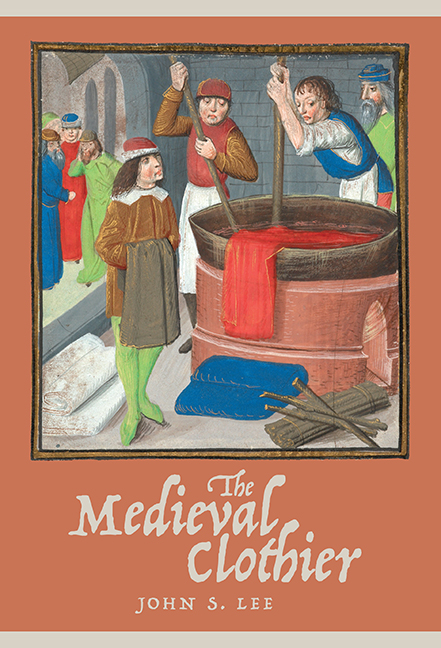Book contents
- Frontmatter
- Dedication
- Contents
- List of Illustrations
- List of Tables
- Acknowledgements
- Abbreviations
- A Note on Money, Weights and Measures, and Places
- Maps
- Introduction
- 1 Making Cloth
- 2 Marketing Cloth
- 3 Identifying Clothiers
- 4 Clothiers and Government
- 5 Clothiers in Society
- 6 Famous Clothiers
- Conclusion
- Appendices
- Gazetteer of Surviving Buildings
- Glossary
- Bibliography
- Index
- Frontmatter
- Dedication
- Contents
- List of Illustrations
- List of Tables
- Acknowledgements
- Abbreviations
- A Note on Money, Weights and Measures, and Places
- Maps
- Introduction
- 1 Making Cloth
- 2 Marketing Cloth
- 3 Identifying Clothiers
- 4 Clothiers and Government
- 5 Clothiers in Society
- 6 Famous Clothiers
- Conclusion
- Appendices
- Gazetteer of Surviving Buildings
- Glossary
- Bibliography
- Index
Summary
I occupy with divers cloth-men in Suffolk, and in other places. The which have weekly some of them, as they send up their cloths, must have their money. And if they fail of their money, they say, they cannot set the poor folks to work. There are divers cloth-men, the which I buy all their cloths that they make … I was wont to sell for most part every year 400 or 500 cloths to strangers, which was worth to the king's grace in his customs, more than though I had shipped myself five times so many. I was wont betwixt Christmas and Whitsuntide to sell most part of them.
Humfrey Monmouth, London draper (1528)The clothier was distinguished by his activities not only in organising the making of cloth, but also in marketing it. In the passage quoted above, Humfrey Monmouth, a London draper and cloth exporter, explains how clothiers, which he calls cloth-men, supply him with textiles to sell overseas. The clothiers send their cloth weekly to be sold in London, and are reliant on the money that Monmouth pays them to employ their workers. Monmouth provided this explanation in May 1528, while he was imprisoned on suspicion of heresy, so we may need to allow for some overstatement of his case to support the petition he was making to Cardinal Thomas Wolsey for his release. Even so, it seems a realistic picture of the commercial environment in which clothiers relied on London merchants to sell their cloths, who in turn were largely dependent on buyers in overseas markets.
Cloth was a relatively flexible commodity. It could be sold on at any stage in the manufacturing process, in any quantity. Clothiers sold cloths both finished and unfinished, with the latter being completed by clothworkers, possibly in London or overseas. Cloth retained its value over time as, unlike foodstuffs, it was not perishable. It was also easily transportable. Officials and organisations acting on behalf of national and local governments regulated quality. Clothiers could choose to sell their cloth locally, in a provincial town, or in London, and to a wide variety of buyers including specialist traders and overseas merchants (Figure 6).
- Type
- Chapter
- Information
- The Medieval Clothier , pp. 77 - 114Publisher: Boydell & BrewerPrint publication year: 2018



